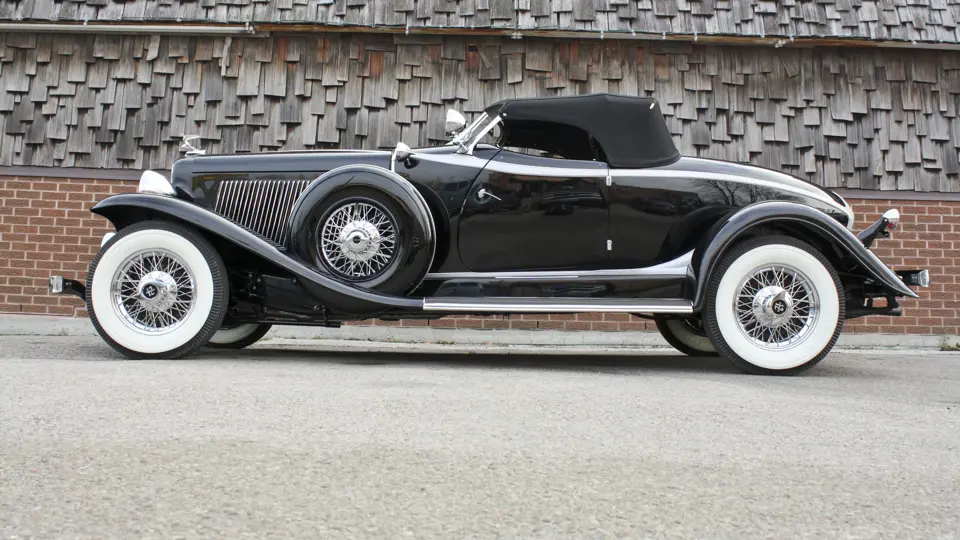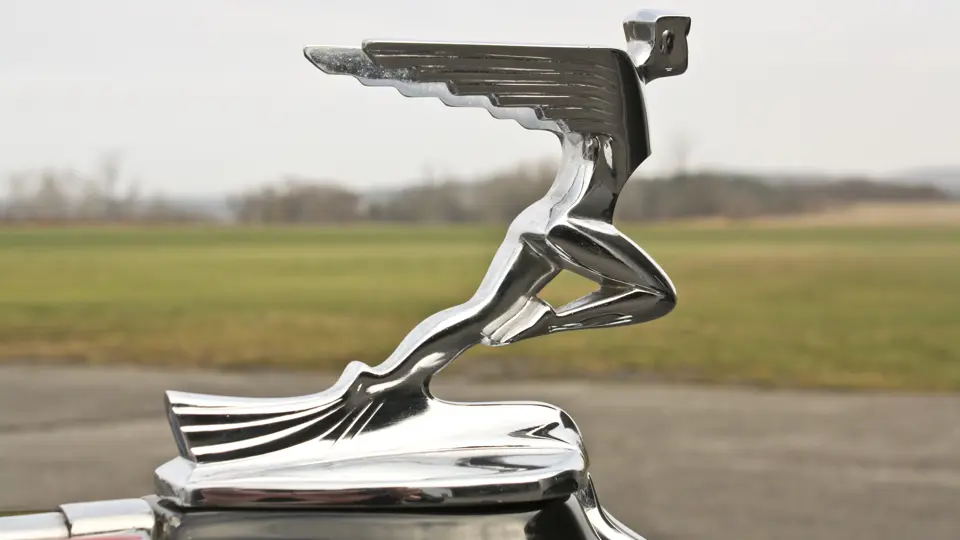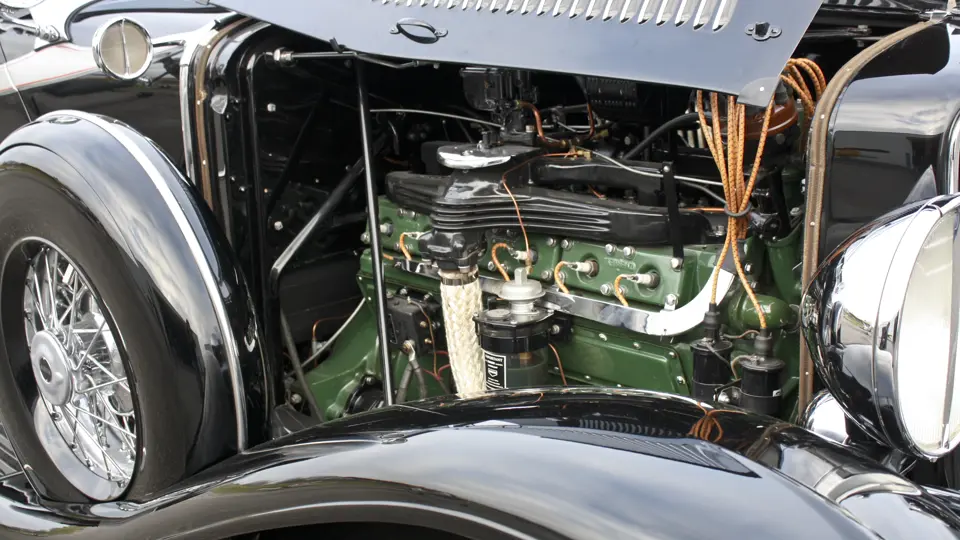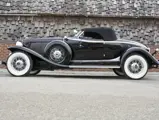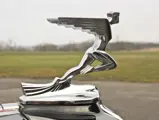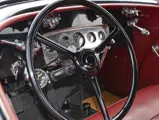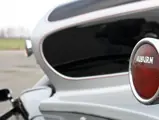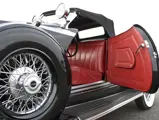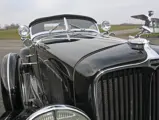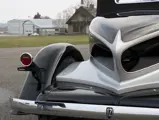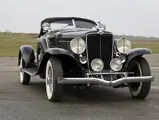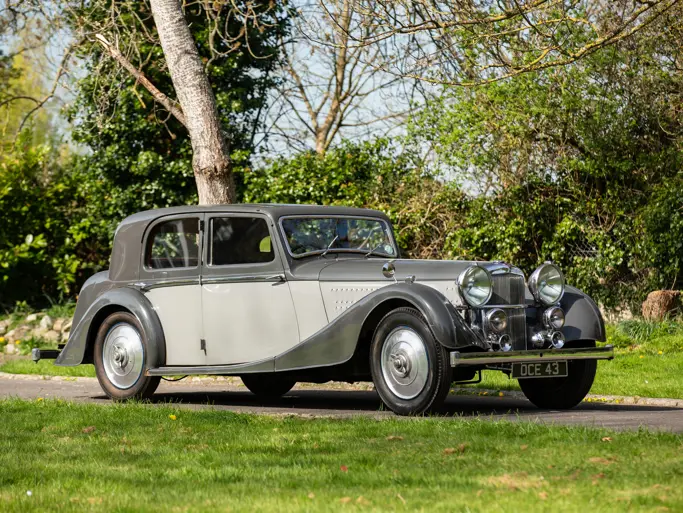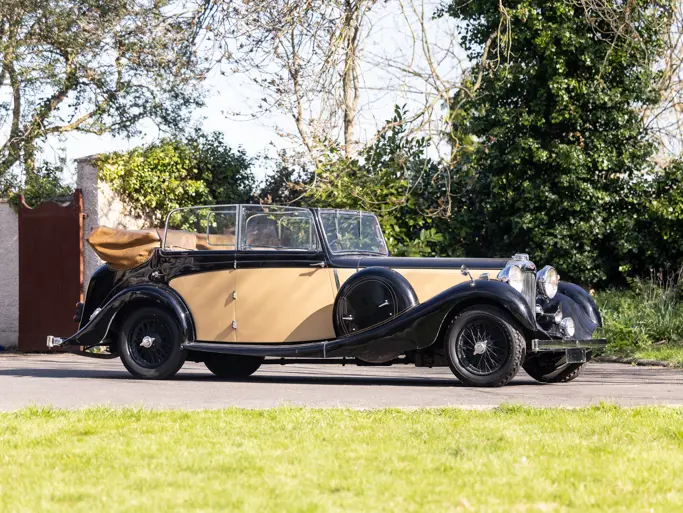160 hp, 391 cu. in. L-head V-12 engine, twin carburetors, three-speed manual transmission with two-speed Columbia electric overdrive, solid front axle and live rear axle with semi-elliptic leaf springs, four-wheel vacuum-assisted hydraulic drum brakes. Wheelbase: 136"
• V-12 Speedster with two-speed Columbia rear axle
• $400,000+ concours-quality restoration in early 2000s
• Best in Show/Auburn at Auburn-Cord-Duesenberg National Meet
During the height of the Classic Era, few auto manufacturers could match the elegance and innovation of the companies under E.L. Cord’s fast-growing business empire. His cornerstone enterprise, of course, was Auburn, which Cord famously transformed into a manufacturer of stylish performers at a reasonable price point.
The short-lived Cord L29 proved that front-wheel drive was a sound drivetrain choice for a big car and Cord was skillfully positioning Auburn as the low-price performance car. Wade Morton drove the new 1929 Auburn 8-115 Speedster at 108.6 mph in a flying mile at Daytona and averaged 84.7 mph for 24 hours. Morton drove a total of 2,033 miles, setting records at Atlantic City, and also established a record at Pike’s Peak.
Cord’s dream for a baby Duesenberg was several years away, but when it appeared as the Cord 810 in 1935, it would set the U.S. auto industry on its ear. In terms of innovation, the front-wheel drive, coffin-nosed, supercharged sports car might still be the most significant American automobile design to that date.
By 1931, Cord was selling straight-eight cylinder Auburns and business was brisk, even as the economy continued to bump along the bottom. Auburn sales actually rebounded in 1931 to more than 34,000. Some of this can be attributed to designer Alex Leamy, who had integrated some of his Cord L-29 styling cues into the new Auburn. These included the split grille-shell, which the late stylist and historian Strother McMinn called “the key to a fresh modern look.” A new speedster was added to the lineup, and with its raked, split windshield and boattail, it remains one of the handsomest cars to emerge from the 1930s.
But Cord had still another ace up his sleeve, and in 1932 he launched his V-12 model, which could be bought for as little as $1,105. The 6.3-liter Lycoming V-12 was designed by George Kublin, Auburn’s chief engineer, and followed Packard practice with a narrow 45-degree vee and a combustion chamber set at an angle to the cylinders. The valves were in the head, but they were horizontal and were operated by a single camshaft and a system of rockers.
The engine developed 160 hp at 3,500 rpm, which was more than Lincoln or Packard produced, and the newly developed Columbia Axle two-speed rear end meant that six forward gears were available. Ratios of 4.54 low range and 3.0 high range meant that hair-raising acceleration could be complemented by high speed, low-revolution touring. To handle such performance, adjustable shock absorbers were fitted, along with large hydraulic drum brakes.
The V-12 speedster was a stunner, but it merely capped Auburn’s handsome eight-cylinder boattail speedster. That had actually been provoked by the Stutz Blackhawk, which he thought he could better at less than half the price, $2,195 against $5,000. However the V-12 speedster was the coup de grace.
The new V-12 broke every stock car speed record from one mile to 500 miles in 1932 and won the B production class for the year. Among its records was the flying mile at 100.77 mph at Muroc Dry Lake, in the AAA Contest Board runs, after which the speedster continued to 500 miles, which distance it covered at an average of 88.95 mph. It was certainly one of the fastest cars of its period, and its performance figures are impressive today.
But the Depression continued to deepen, and car sales continued to fall. Auburn sales for 1932 were down to 11,000 from 34,000 in 1931—a 67% drop. However 1933 was even worse, with sales falling to 4,814 cars, and the V-12 was dropped for 1934. Nevertheless, about 225 V-12s were assembled in 1934, using leftover 1933 engines and bodies.
Over two-and-a-half years, only 2,250 V-12 Auburns were produced, in six body styles. The survival rate has not been outstanding, and at the last couple of ACD Festivals in Auburn, Indiana, only 24 V-12s appeared among 214 cars judged.
The car on offer is a stunning restoration of a sound car that surfaced in Quebec in the 1970s. In the early 2000s, it was treated to a frame-off, show-quality restoration that is estimated to have cost in excess of $400,000. Evidence of just how well that was accomplished can be gathered from the 21,000 miles the car has covered since then.
Finished in excellent black paint with silver trim, this speedster is fitted with a black canvas disappearing top and double-sided whitewall tires. The car rides on chrome wire wheels and features twin driving lights and trumpet horns up front and hand-directed spotlights on the cowl. It also sports twin side-mounted spares with covers. The interior is fitted in dark red leather and the fully-instrumented dash panel is beautifully damascened. The car was shown at the ACD national meet at Auburn, Indiana about five years ago. At this most prestigious ACD event, the speedster won Best in Show/Auburn, in addition to Junior and Senior awards.
While this car will be a welcome addition at any serious concours event, the new owner will probably derive even more pleasure by entering long distance vintage rallies, like the Colorado Grand and the California Mille in America. It is a full CCCA classic and such an imposing, and particularly American, icon that is bound to draw admiration wherever it appears.
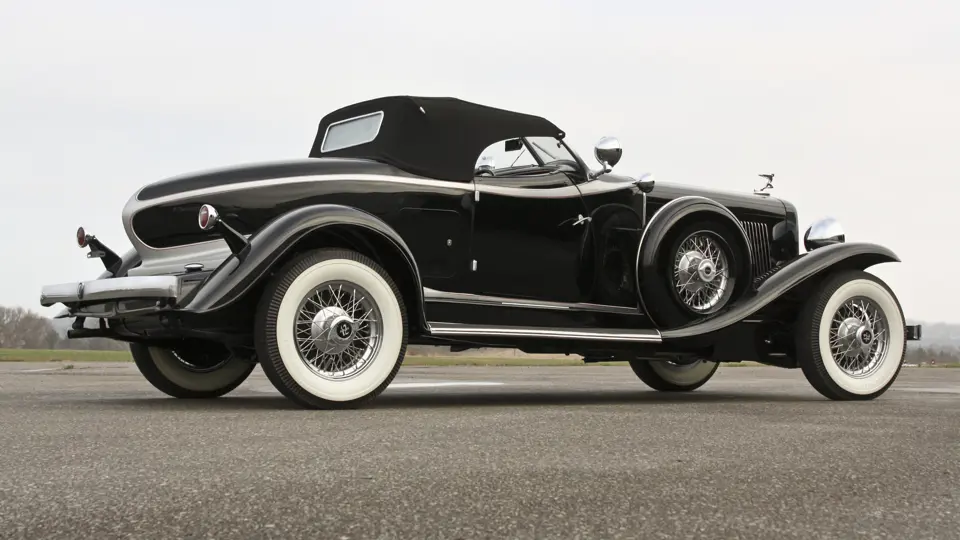



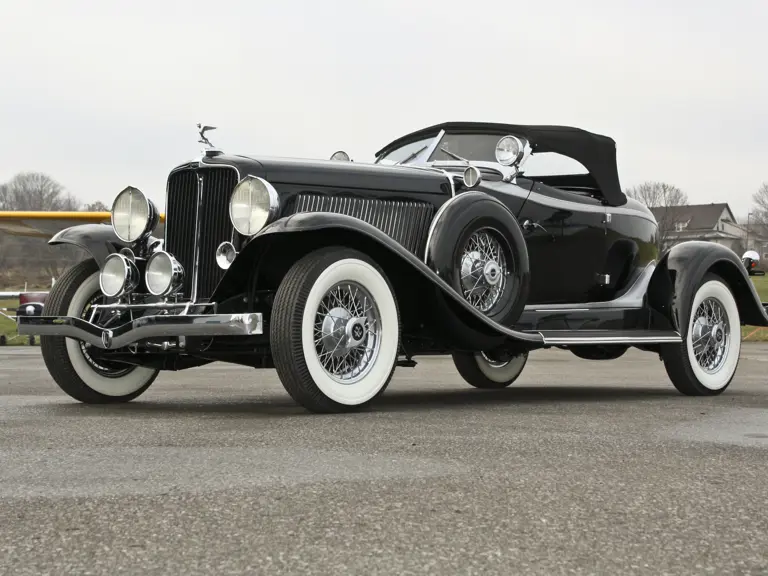
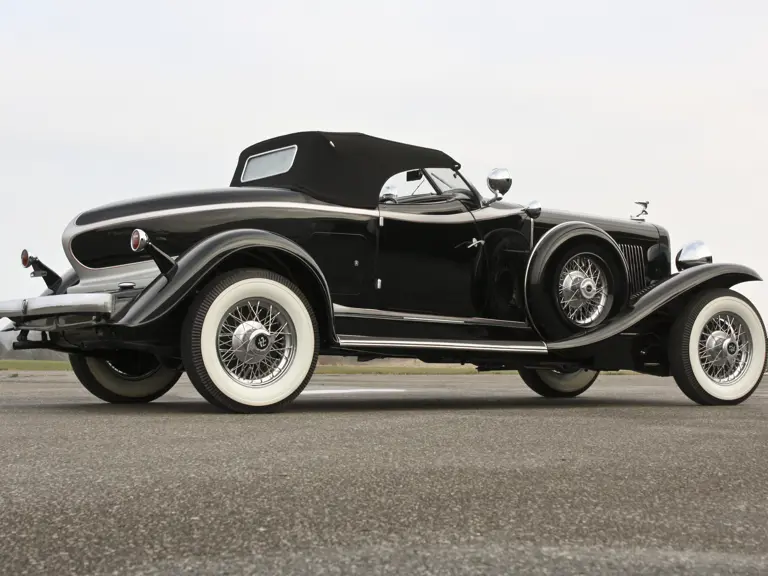
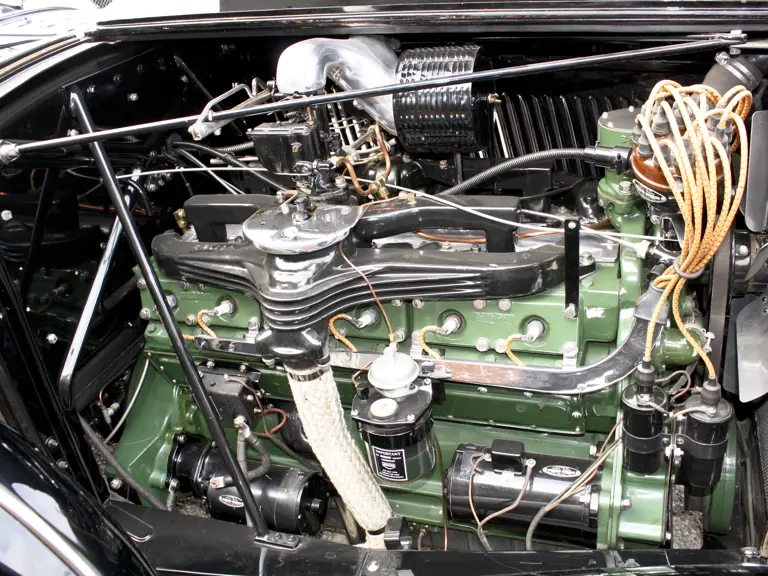
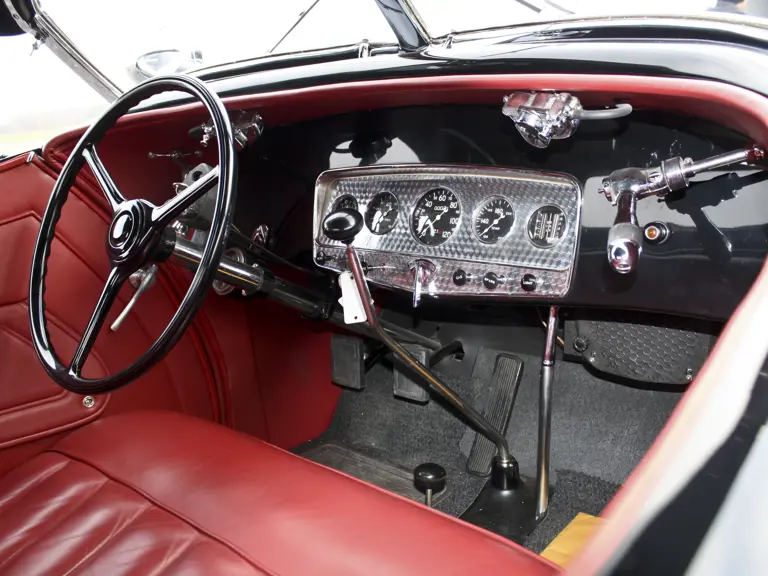
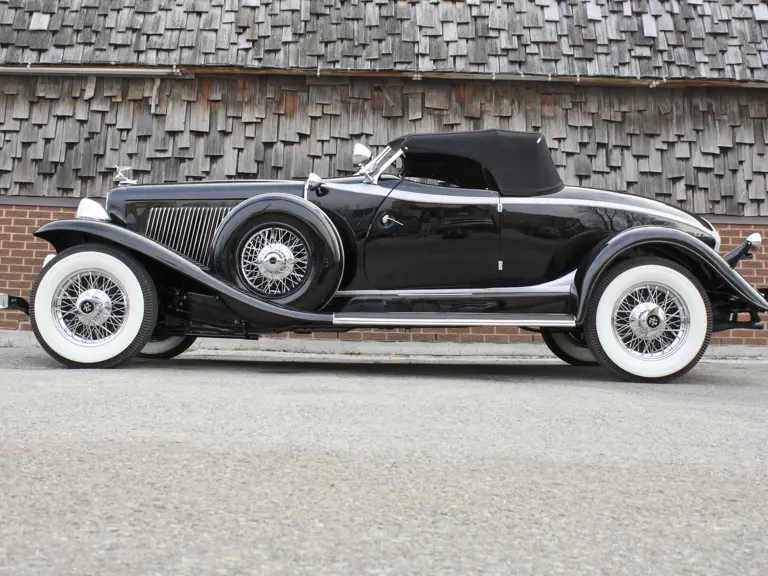
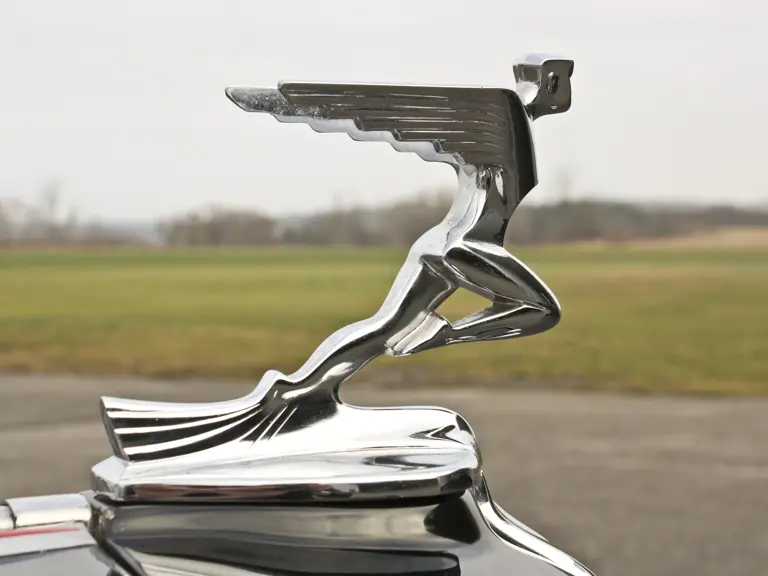

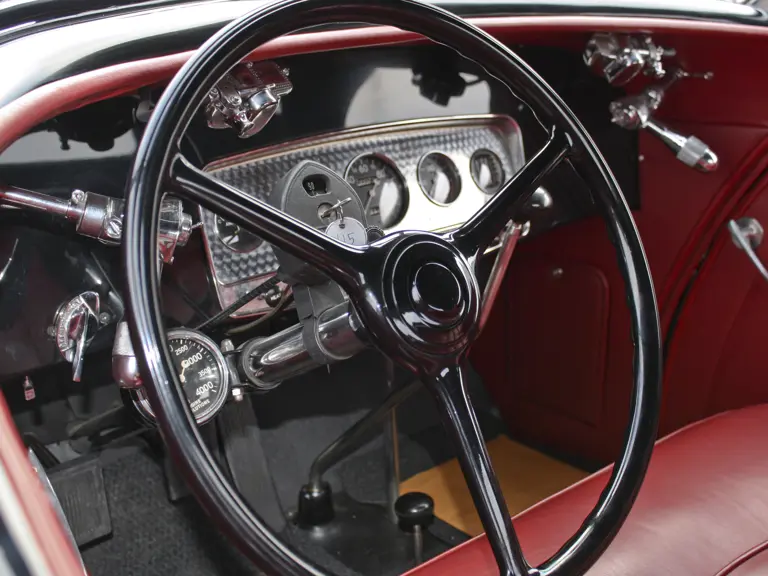
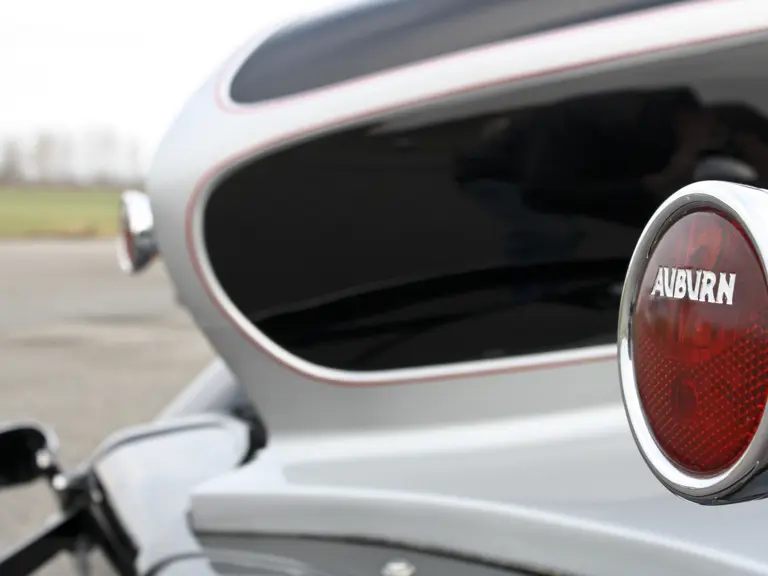


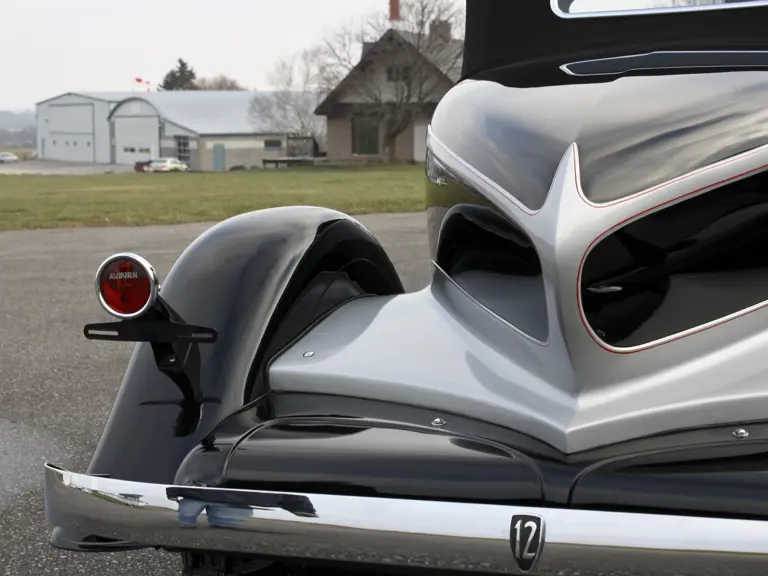
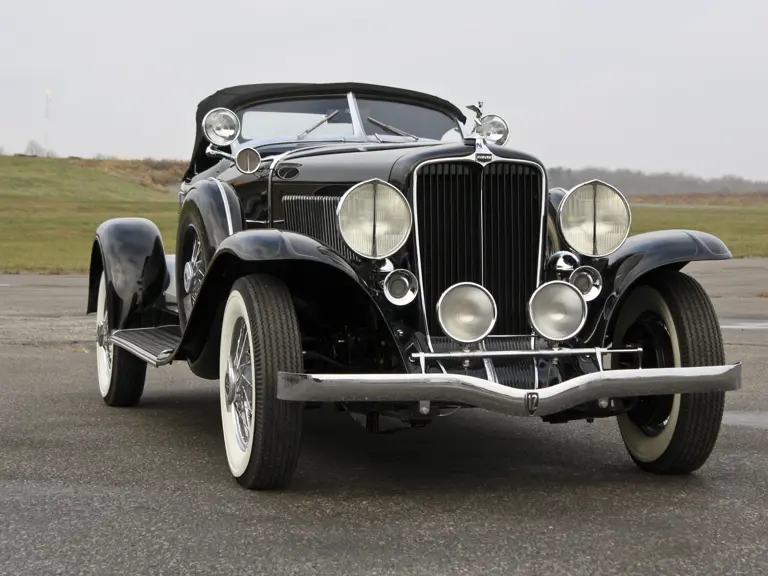
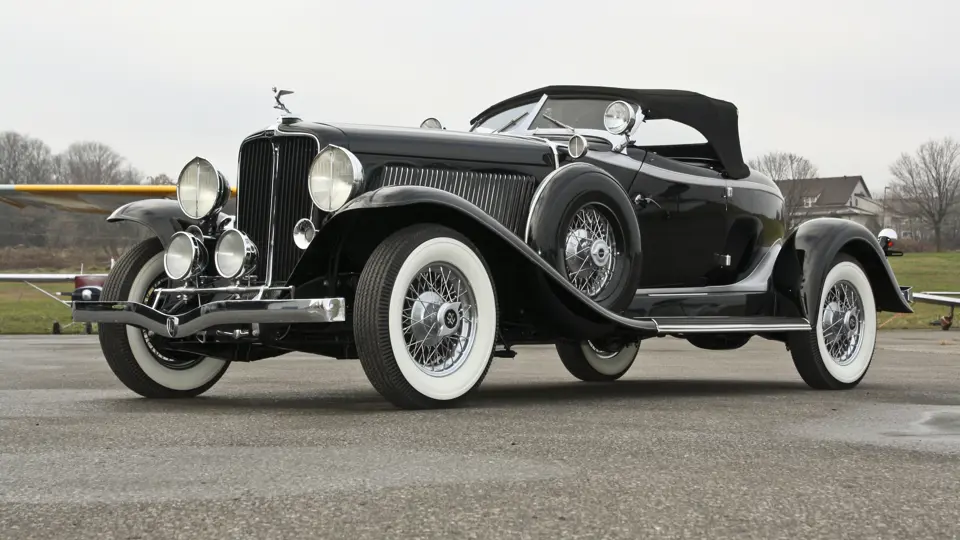
 | Phoenix, Arizona
| Phoenix, Arizona
